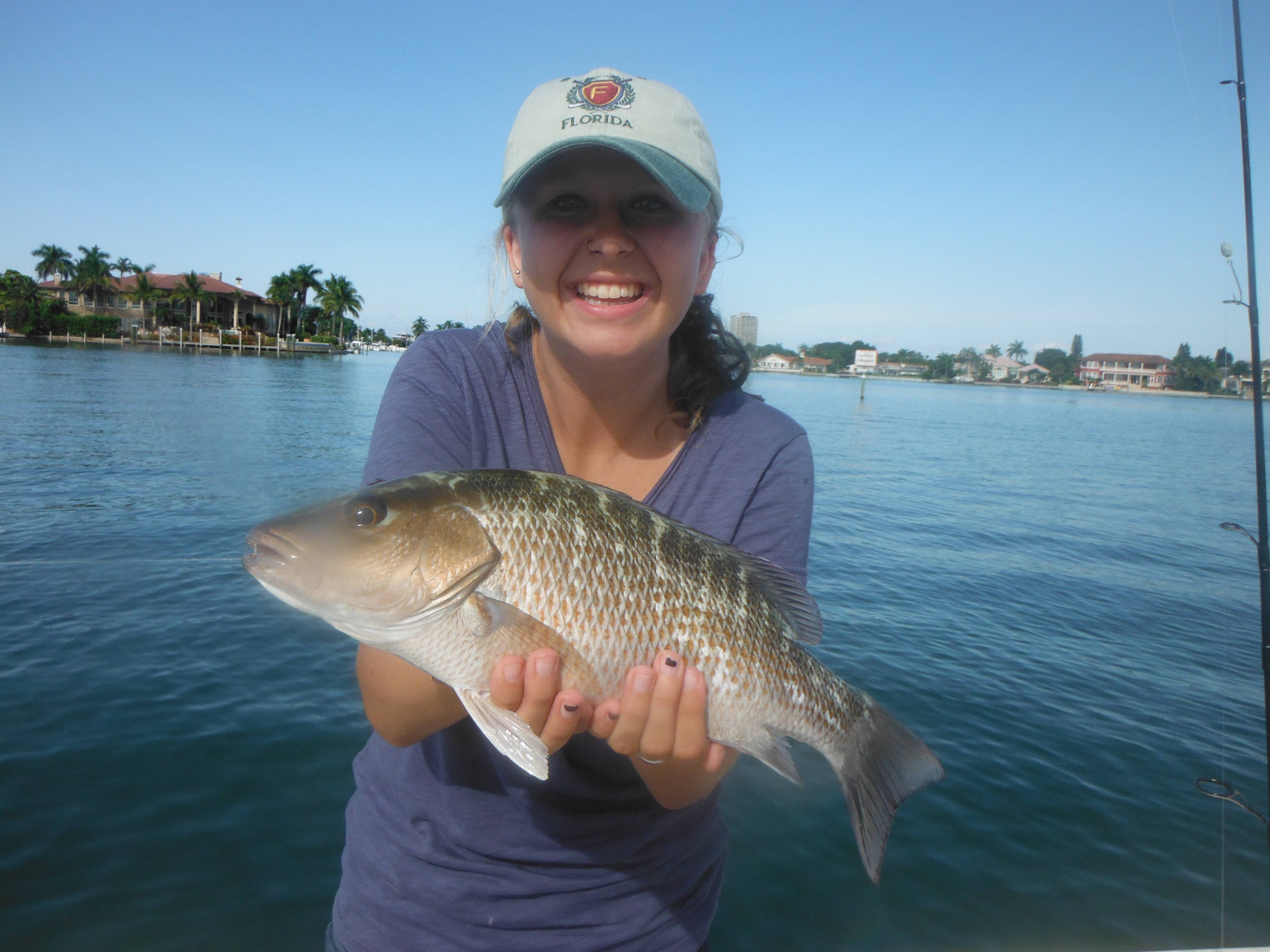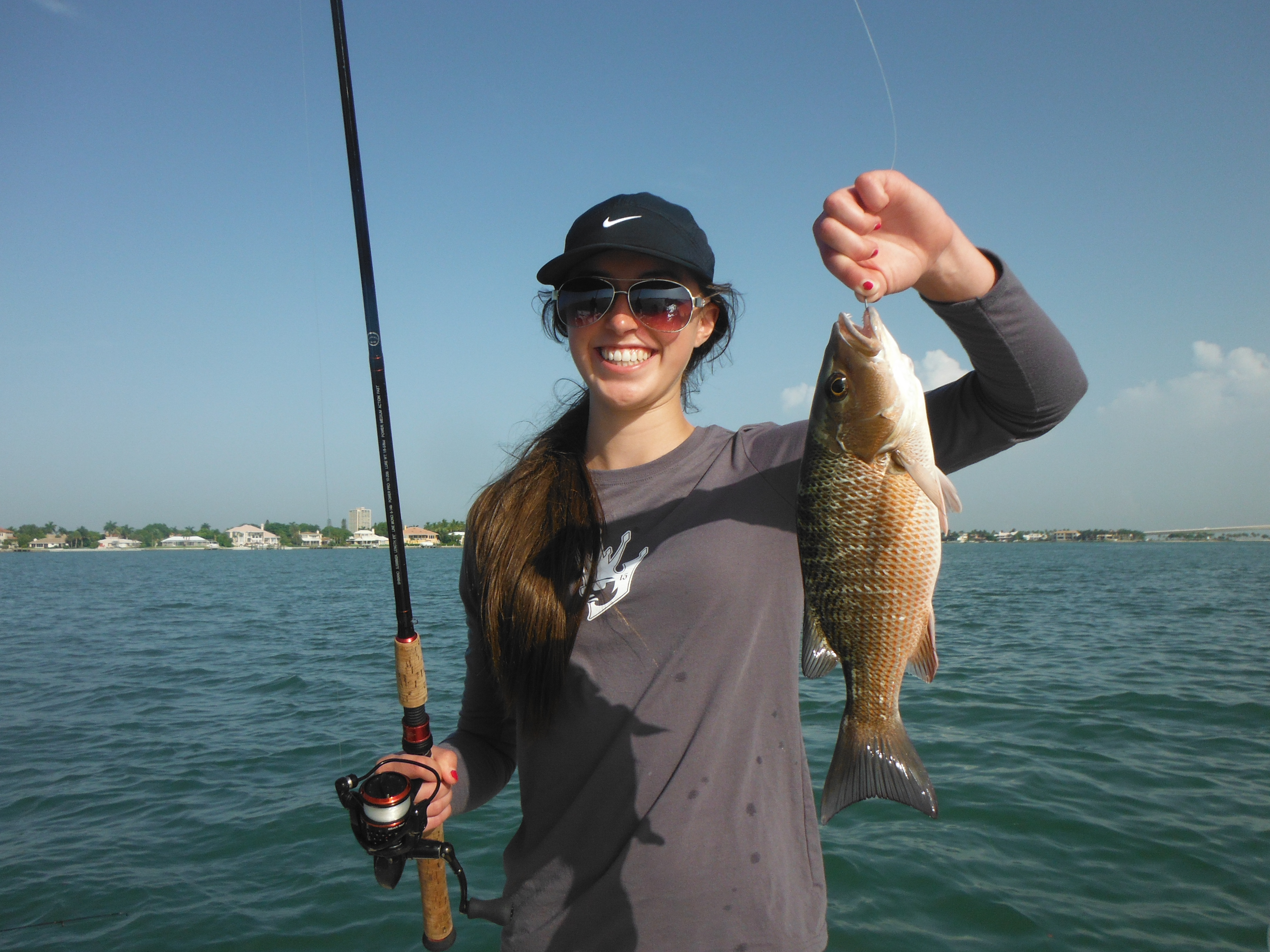by Capt. Jim Klopfer
The drag was screaming as lined peeled off of my clients reel. We were chumming with live baitfish on a grass flat in 6′ of water in Sarasota Bay. We had already landed speckled trout, Spanish mackerel, and several other species, but this was obviously something different. A few moments later the riddle was solved as a large mangrove snapper came alongside the boat!
Mangrove snapper are a very popular species of fish that many Suncoast anglers target for their tenacity when hooked but maybe more so for the way they taste on a dinner plate. These popular saltwater panfish are normally found near some type of structure such as docks, bridges, rocky shorelines, and even oyster bars. However, over the last few years there has been seeing an increase in both numbers and size of mangs being landed by clients on fishing charters when fishing over open grass flats in late summer and early fall. The popular theory is that these fish are moving through the bay, out of the passes, and into the Gulf of Mexico to spend the rest of their lives.
Snappers can be fooled by artificial baits, especially scented soft plastics, but the vast majority of fish will be landed by anglers fishing with natural bait, either live or fresh cut bait of shrimp. Catching a well full of “white bait” (scaled sardines and threadfin herring) and chumming over a deep grass fat is extremely productive. Most of the snapper are mixed in with trout and other species. The normal rig is a #1/0 hook tied to a 24″ piece of fluorocarbon leader. A split shot can be added to get the bait down if current is present or if birds are a problem. However, snappers can be a tad fussy at times, especially if the water is very clear. If “mangs” are seen in the chum but won’t bite, a switch to a smaller hook and lighter leader may get them to eat.
Sometimes the mangroves actually prefer dead bait and chum. I learned this on a charter when we were finishing up and as I dumped my dead bait over the side a huge school of snapper rose up and tore into them. Free-lining dead baits resulted in a last-minute flurry. So, before I leave a spot, I usually toss out a handful of dead baits just to see what happens.
Of course, mangrove snapper will also school up in the traditional types of structure, especially in the passes. The rocky shoreline in Big Sarasota Pass will hold a large number of snappers as the water is deep with good current flow and a lot of structure. Baitfish will also be thick in the passes. The technique is to fish a live bait, (shrimp, pilchard, threadfin, or pinfish), right on the bottom. Current flow will determine the amount of weight used. Less is more; using the minimum amount of weight to hold bottom is best.


